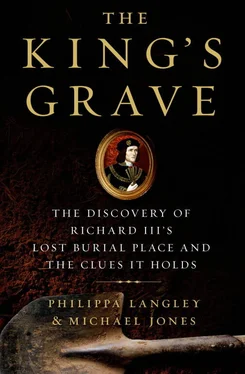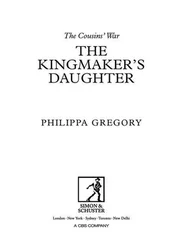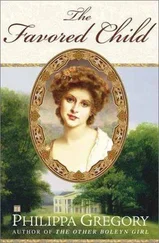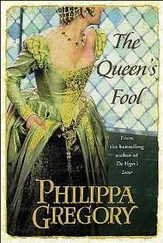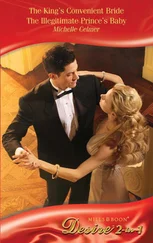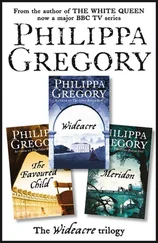The part played by Leicester City Council has been much overshadowed, and I hope this book may help put that right. They graciously granted permission to excavate, for which my appreciation goes especially to Sir Peter Soulsby, the City Mayor, for unwavering support, and Sarah Levitt, lead on the project, whom I have the honour to count as both colleague and friend. To the utterly brilliant Richard Buckley and his dedicated team at University of Leicester Archaeological Services whose skill and expertise shine through in these pages. To that remarkable centre of learning, Leicester University, particularly Professor Mark Lansdale, Dr Julian Boon and Dr Turi King for their many kindnesses, and Richard Taylor, Deputy Registrar, for his decision to support the project. To the Dean, the Very Reverend David Monteith and all at the Cathedral who have preserved and honoured the memory of King Richard. To Julian Ware, Simon Farnaby, Simon Young, Louise Osmond, Pete Woods, Alex Rowson and the entire production team at Darlow Smithson, together with John Hay, Julia Harrington and Ralph Lee at Channel 4. To many other partners and donors: Martin Peters at Leicestershire Promotions, Michael Johnson and Colin Cook at Leicester Adult Schools, and numerous private investors including Raymond Bord, David Fiddimore, Gerry Martin, Fiona Nicolson and Jack Thomson. To Martin Traynor OBE at Leicestershire Chamber of Commerce, Heather Broughton at Leicestershire County Council and Stuart Bailey and Ben Ravilious at Leicester Civic Society. To all at the Richard III Society, its dedicated Secretaries Sue and David Wells, Relations Officer Richard Van Allen and its Deputy Chair Wendy Moorhen, plus local members Sally Henshaw and Richard Smith, for their long years of commitment. To my friends and family for their unfailing support, particularly Sheila Malham and Geoff Akers, and of course my two sons Max and Raife and their father, John. My final thanks must go to all those Ricardians around the world who stepped in when the dig was threatened with cancellation. The search for King Richard was yours.
* * *
Michael Jones would like to express gratitude to his co-author for sharing his vision of putting Richard III back into the story of his family, the House of York, rather than casting him out from its ranks. I would like to thank fellow scholars Professor Michael Hicks, Dr Rosemary Horrox, Drs Sean Cunningham and James Ross at the National Archives, Dr Malcolm Mercer at the Tower Armouries, Professor Colin Richmond and Dr Philip Morgan at the University of Keele, Dr Rowena Archer, Cliff Davies, Diana Dunn, Keith Dockray, Margaret Condon and Anne Crawford for their support over years of working on Richard III, and particularly Professor Tony Pollard and Dr David Grummitt for the advice and help they gave as this present book got underway. To Peter and Carolyn Hammond, who for many years put the resources of the Richard III Society library at my disposal: I am appreciative of their personal kindness and hospitality.
Richard Mackinder of the Bosworth Battlefield Centre has walked the battlefield with me and discussed the latest archaeological finds there. Tobias Capwell, Curator of Arms and Armour at the Wallace Collection, has given helpful advice on the logistics of armour and Richard’s cavalry charge. Bob Woosnam-Savage of the Royal Armouries, an expert on late medieval weaponry and wounding in battle, has provided invaluable support around interpreting the battle wounds on Richard’s remains and reconstructing the king’s final moments at Bosworth. In the case of both the archaeological finds and battlefield terrain, Richard and Bob have stressed that their conclusions at this stage can only be provisional.
Sioned Williams, Curator of Furniture at the National History Museum, Cardiff, has kindly provided information on Rhys ap Thomas’s bed lintel, and Professor Paul Moroz, Orthopedic Surgeon at the Children’s Hospital of Eastern Ontario, on the likely effects of Richard’s scoliosis. Geoffrey Wheeler has provided valuable assistance with the picture research. I am also grateful to my friends and family for their support – and to my two sons Edmund and Rufus and to their mother Liz.
We both would like to thank our agent, Charlie Viney, who has encouraged us every step of the way, and Roland Philipps, Caroline Westmore, Becky Walsh and everyone at John Murray, who have given us such great support, as well as Morag Lyall, our copy-editor, and Christopher Summerville who has compiled the index. My final debt is to my supervisor, Professor Charles Ross, who first kindled my interest in Richard III. Charles’s major biography of Richard was completed whilst I was his post-graduate student and we discussed it on many occasions. His depth of scholarship and personal generosity inspired my love of medieval history – and I have thought of him often as this book was written.
Bosworth Battlefield Centre
Darlow Smithson Productions Ltd
Darlow Smithson Productions Ltd
Darlow Smithson Productions Ltd
Lambeth Palace Library
Looking for Richard project 2013
National Museum of Wales
Private collection
Private collection
Private collection
Private collection
Royal Armouries, Leeds
Stratascan Ltd: (Claire Graham)
Stratascan Ltd
Dr Phil Stone, Richard III Society
University of Leicester: (Colin G. Brooks)
University of Leicester
University of Leicester
University of Leicester: (Colin G. Brooks)
University of Leicester: (Colin G. Brooks)
University of Leicester
University of Leicester Archaeological Services
Geoffrey Wheeler
Geoffrey Wheeler
Geoffrey Wheeler
Geoffrey Wheeler
Geoffrey Wheeler
Geoffrey Wheeler
Introduction: The Inspiration
The quotes about Richard come from the York City Records, 23 August 1485 and 14 October 1485.
Chapter 1: The Road to the Dig
For Richard’s burial in the Greyfriars Priory in Leicester see Peter Hammond, ‘The Burial Place of Richard III’, in Richard III. Crown and People, Richard III Society, 1985, p. 31 (also Ricardian, IV, 59 (December 1977), pp. 30–31).
For Richard’s tomb, see Rhoda Edwards, ‘King Richard’s Tomb at Leicester’, in Richard III. Crown and People, pp. 29–30 (also Ricardian, III, 50 (September 1975), pp. 8–9).
For John Speed’s report on the site of King Richard’s grave, see John Speed, History of Great Britain, 1611, p. 725.
For Wren’s account of the memorial pillar in Herrick’s garden in Leicester see Parentalia, or Memoires, of the Family of the Wrens (London, 1750), p. 144.
See Ashdown-Hill, Last Days of Richard III, pp. 114–23, for full details on the discovery of Richard III’s mtDNA sequence. Ashdown-Hill’s discovery was made in 2005 and published in John Ashdown-Hill: ‘Finding the DNA of Richard III’, Medelai Gazette, August 2005. Ashdown-Hill also published full details of Richard III’s mtDNA sequence for HVR1 and HVR2 (subsequently confirmed in the Leicester bones, 2013) in ‘Margaret of York’s Dance of Death: The DNA Evidence’, Handelingen van de Koninklijke Kring voor Oudheidkunde, Letteren en Kunst van Mechelen, 111, 2007, pp. 193–207.
The site of the lost Greyfriars Church was believed to be close to Grey Friars Street in the north-east of the Greyfriars precinct. See Ken Wright, The Field of Bosworth, 2002, pp. 142–3, 146. David Baldwin, ‘Is there a King under this bridge?’ Leicester Mercury, October 8 2002.
For the assertion that Richard may have first been buried in the Church of the Annunciation in the Newarke in Leicester, see Anne F. Sutton and Livia Visser-Fuchs, ‘The Making of a Minor London Chronicle in the Household of Sir Thomas Frowyk (died 1485)’, Ricardian, X, 126, (September 1994), pp. 86–103.
Читать дальше
